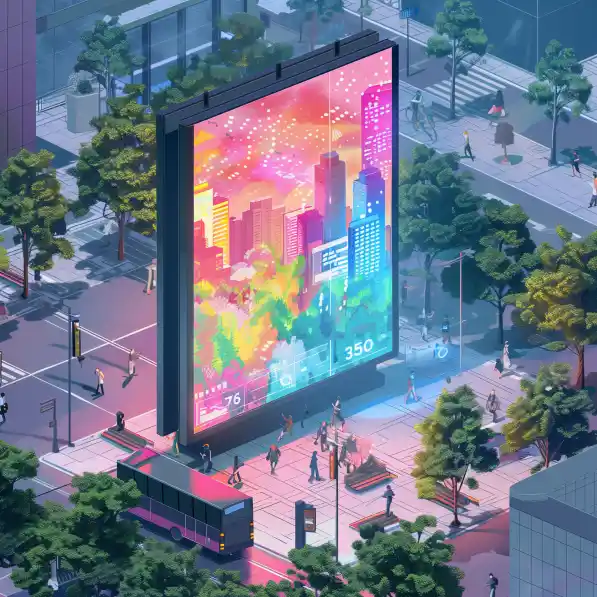From the mailbox to the trash can. This happens every year with more than 28 billion advertising brochures — if they have even made it into the mailbox. In fact, there is now a “no advertising” sticker on every fourth German mailbox, according to the results of the latest YouGov study. However, the rejection of the colorful flyers is not necessarily due to a lack of interest in the advertiser, but rather to the output medium. The aspect of sustainability plays a major role here. The idea of an advertising brochure is good because it offers consumers added value by providing information about current offers and thus encourages them to buy. However, due to the weekly changing spending, paper creates an enormous environmental impact, which would be easy to avoid in the digital transformation. It is therefore high time for advertisers to say goodbye to the print brochure and use the potential of the digital era. Retailers such as Obi and Rewe Are already abandoning the outdated advertising method and focusing on environmentally friendly alternatives. In contrast to print advertising, such alternative, digital advertising formats are also more cost-effective and measurable, as they prevent wastage and offer a wide range of targeting options. We would first like to present the best digital advertising formats in more detail.

1. Display Flyer Ads
Display flyer ads represent the digitization of analog print brochures. You can therefore still browse through the brochure — just digitally. The benefits are manifold and start with targeting: This is no longer limited to postal codes, but can be tailored to specific personas. These range from demographics such as age to affinities such as “Bargain Hunters” or Custom Audiences, which, for example, depict users who are specifically looking for current offers from the xyz brand. In addition, due to the omission of print editions, there are no limits to scaling and thus reach — based on the aforementioned targeting, users can be addressed locally to nationwide on relevant inventories such as chefkoch.de or wetter.com. The design of the advertising material is also flexible and can be individually adapted to suit your needs — whether it's a classic half-page ad or an innovative responsive ad format.
2. Hero products with data-driven display ads
Instead of a generalistic digital flyer, it is recommended under certain circumstances to have a few offers rotated through the advertising material. This applies in particular to high-involvement products, as they are not bought on impulse and the potential product selection is limited to a few options. For example, personas who are specifically looking for a new sound system can be personalized and automatically addressed with appropriate suggestions. Live product information (feed), which represents the in-stock product portfolio of the electronics market, is combined with the technical set-up and targeting. Relevant audiences can thus be addressed based on specific keywords. If this approach is to be transferred to FMCG products, product-dependent targeting is not recommended due to low involvement. Instead, users can target specific diets (e.g. vegan, vegetarian, Paleo or Mediterranean) in order to display a corresponding range of foods in advertising material.
3. Retail media
Advertising subsidy campaigns (WKZ) on the next level! Flyer ads can be advertised to industry partners who, for example, want to promote a product launch. At the same time, advertising subsidies can be secured in this way. However, it is also important to emphasize that not only your own brands, but also the brands of retail partners can benefit from digital flyer ads by placing a strong focus on them and driving targeted traffic to the store. Dynamic Digital-Out-of-Home (Dynamic DOOH), Display Flyer Ads with external brochure and map integration, and YouTube/Connected TV. Dynamic DOOH: Advertising hero products in pedestrian zones, subway stations and bus stops on screens that are in close proximity to the stationary POS. Dynamic because directions to the corresponding store can be integrated and product availability can be taken into account when playing the advertising.Display flyer ads with external brochure and map integration: The user can either be directed to the advertiser's website using a call-to-action to be able to download the brochure and coupons, or navigate directly to the nearest POS via Google Maps integration.YouTube/Connected TV: Six seconds bumpers Ads offer the ideal opportunity To draw attention to current offers on the big screen based on interests. The Google environment offers granular targeting options. In addition, the ad is placed immediately after the user has selected the content, making the advertising message particularly eye-catching.
Conclusion
In the age of digital transformation, there is the potential to change brochure advertising in a sustainable and goal-oriented way and to switch to an environmentally friendly, scalable and efficient medium. Only with digital brochures will it be possible to make this type of advertising measurable, prevent wastage, display offers smarter with dynamism and personalization, and ultimately be able to lead target groups to the store better than with print brochures. It is therefore recommended that advertisers look at the alternatives of classic print brochures such as display advertising and reconsider their actual needs. This is the only way to compare the resulting effects and develop successful strategies. Companies are not only optimizing their marketing measures, but also reducing their ecological footprint and ensuring long-term success in the digital era.





